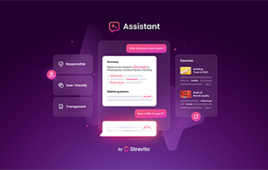
Researchers in Toronto believe they have developed an algorithm that would allow a smart phone to identify human characteristics. (Credit: Shutterstock)
Bad hair days may soon be prevented by just looking at your smart phone.
Parham Aarabi and Wenzhi Guo, researchers at the University of Toronto Faculty of Applied Science & Engineering, have developed a machine learning algorithm that learns directly from human instructions rather than an existing set of examples.
The algorithm outperformed conventional methods of training neural networks by 160 percent and outperformed its own training by 9 percent.
The algorithm is seen as a significant leap forward for artificial intelligence as it learned to recognize hair in pictures with greater reliability than that enabled by the training.
The two researchers were able to train the algorithm to identify people’s hair in photographs—a much more difficult task for computers than it is for humans.
“Our algorithm learned to correctly classify difficult, borderline cases—distinguishing the texture of hair versus the texture of the background,” Aarabi said in a statement. “What we saw was like a teacher instructing a child and the child learning beyond what the teacher taught her initially.”
Neural networks are computer networks that learn dynamically. Humans teach the networks by providing a set of labeled data and asking the neural network to make decisions based on the samples it’s seen.
This means you can train a neural network to identify the sky in a photograph by showing it hundreds of pictures with the sky labeled.
However, in this case the algorithm learns directly from human trainers, which is being dubbed heuristic training.
Humans provide direct instructions that are used to pre-classify training samples rather than a set of fixed examples.
Trainers use guidelines like “The sky is likely to be varying shades of blue” and “Pixels near the top of the image are more likely to be the sky than pixels at the bottom” to program the algorithm.
The new training approach makes correct classifications of previously unknown or unlabeled data, which is one of the biggest challenges for neural networks.
This is important for applying machine learning to new situations, such as correctly identifying cancerous tissues for medical diagnostics or classifying all the objects surrounding and approaching a self-driving car.
“Applying heuristic training to hair segmentation is just a start,” Guo said in a statement. “We’re keen to apply our method to other fields and a range of applications, from medicine to transportation.”
The study, which was published in the journal IEEE Transactions on Neural Networks and Learning Systems, can be viewed here.




